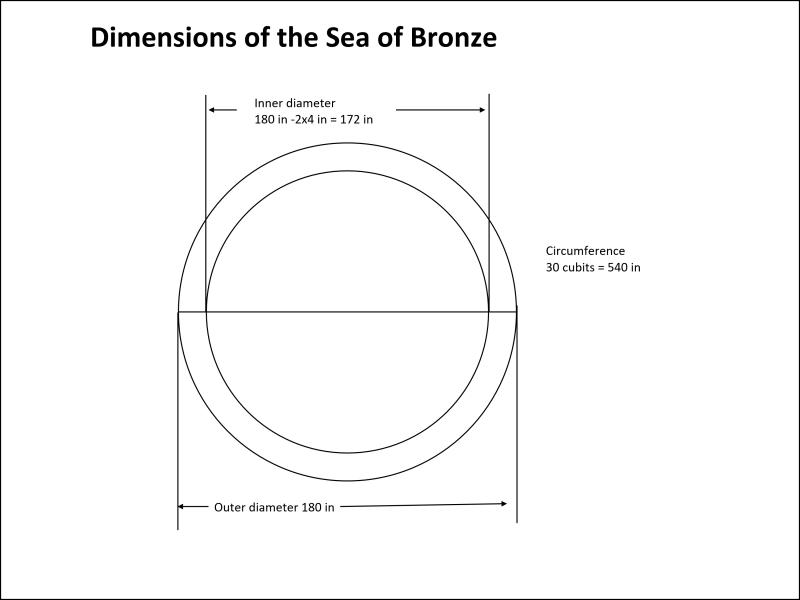Temple of Pi
1 Kings 7:23
“And he made a molten sea, ten cubits from the one brim to the other: it was round all about, and his height was five cubits: and a line of thirty cubits did compass it round about.”
 In 1 Kings 7:23, there is an unusual account of how Solomon had the sea of bronze made. We read that is was “ten cubits from brim to brim, and five cubits high, and a line of thirty cubits measured its circumference”.
In 1 Kings 7:23, there is an unusual account of how Solomon had the sea of bronze made. We read that is was “ten cubits from brim to brim, and five cubits high, and a line of thirty cubits measured its circumference”.
Many atheists and skeptics have used this verse to criticize the Bible. They suggest that the inaccuracy suggested by the dimensions given is inconsistent with a Book claiming to be without error. They suggest that a diameter of 10 cubits and circumference of 30 cubits is impossible, as the relationship between these two values is governed by a value called pi (?).
Now, pi, the famous mathematical constant, is found by dividing the circumference of a circle by its diameter. So, if Solomon had made the sea ten cubits across, then surely the circumference would have to be about 31½ cubits.
What the skeptics fail to notice is that verse 26 informs us that there was a rim, with a width of a handsbreadth. A cubit is about 18 inches, while a handsbreadth is 4 inches. So the circumference is 540 inches. The rim-to-rim distance is 180 inches, but we need to subtract two handsbreadths to find the diameter of the vessel, which will be 172 inches. 540 divided by 172 is 3.1395, which is extremely close to the recognized value of 3.1416, giving a tiny experimental error of just 0.07% – well within the accuracy of any measuring device used at the time.
This little math lesson is, as expected, consistent with our presupposition of the Bible’s trustworthiness.
Prayer: Thank You, Lord, that we can trust Your word to be true in even the tiniest, least significant details. Help us to trust Your word for all the big events of our lives. Amen.
Author: Paul F. Taylor
Ref: Lisle, J. (2009), As easy as pi, accessed 8/21/2017. Image: Paul Taylor.